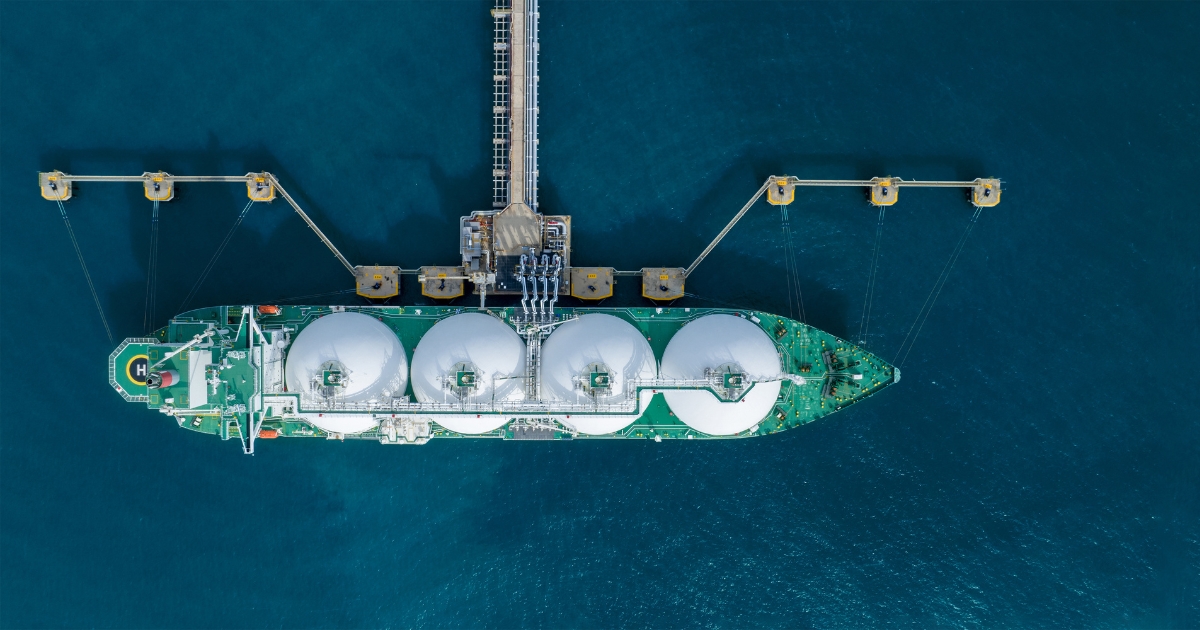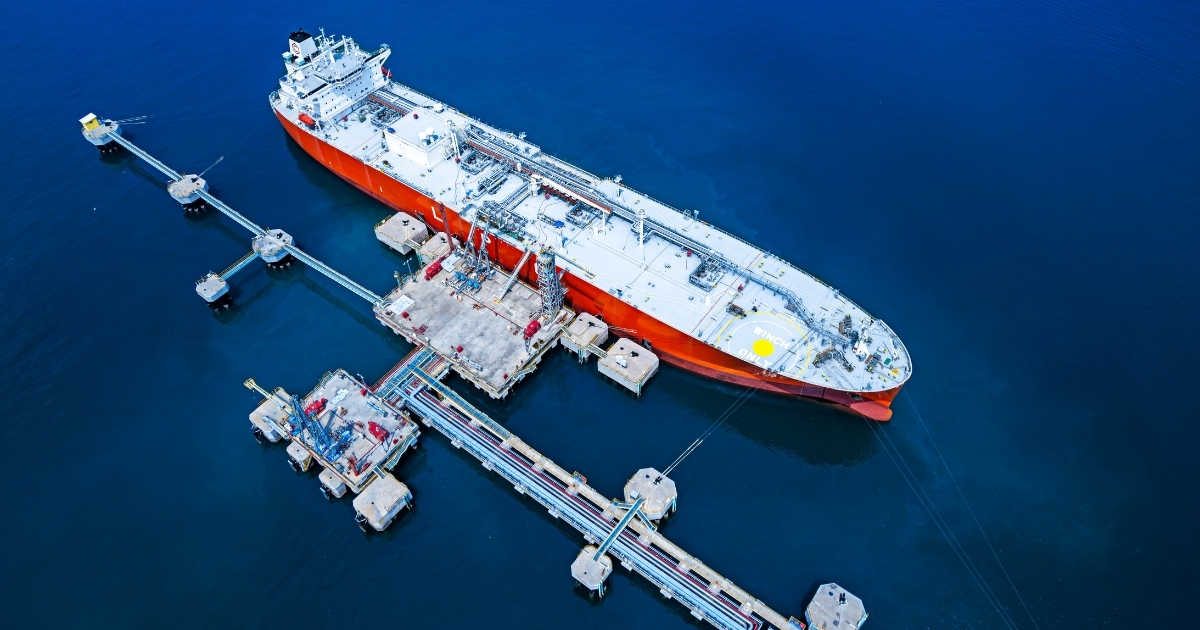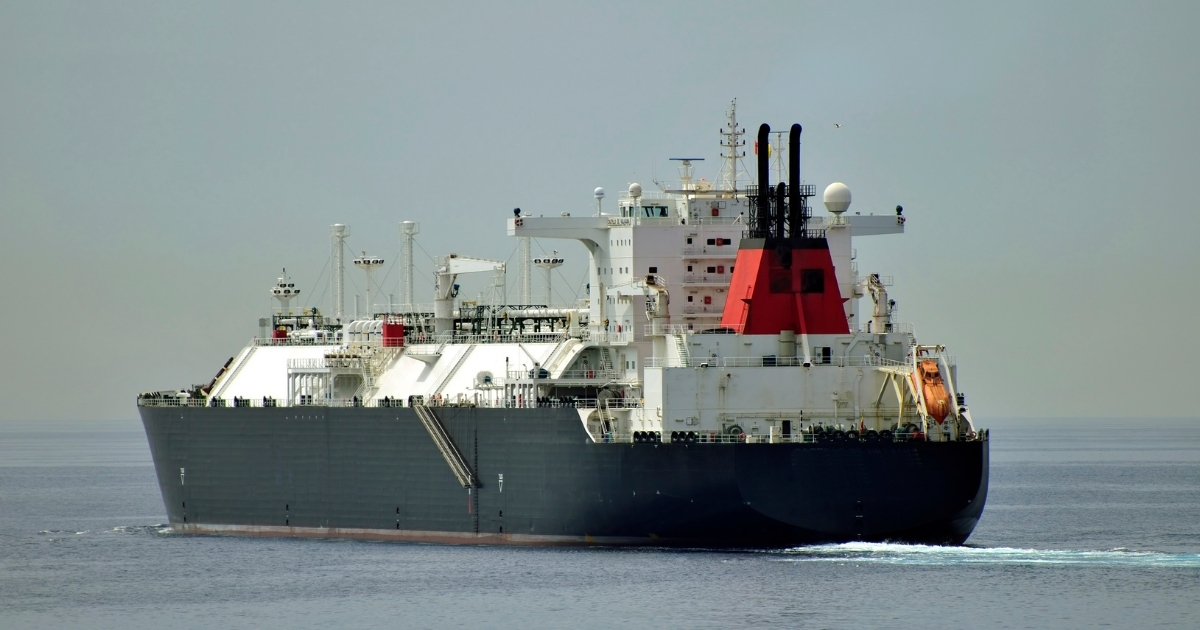-
LNG carriers with cryogenic tanks
-
LPG carriers with pressurized tanks
-
Ethylene carriers for versatile transport
History and Evolution of Gas Tankers
Early Development
The history of gas tankers dates back to the early 20th century when the first attempts were made to transport liquefied gases by sea. Initially, these efforts faced numerous challenges, including safety concerns and technological limitations. However, the demand for efficient gas transportation led to significant innovations in ship design and construction.
Early gas tankers were relatively small and lacked the sophisticated technology seen in modern vessels. Despite these limitations, they laid the groundwork for future advancements in the industry.
-
Began in early 20th century
-
Faced safety and technological challenges
-
Laid groundwork for future advancements
Modern Advancements
Modern gas tankers have evolved significantly, incorporating cutting-edge technology to enhance safety and efficiency. Innovations such as double-hull designs, advanced navigation systems, and improved cryogenic storage have revolutionized the industry. These advancements have not only increased the capacity of gas tankers but also reduced the environmental impact of gas transportation.
Today's gas tankers are equipped with state-of-the-art systems that ensure the safe and efficient transport of liquefied gases across the globe. These vessels are a testament to the industry's commitment to innovation and sustainability.
-
Incorporate cutting-edge technology
-
Double-hull designs and advanced navigation
-
Increased capacity and reduced environmental impact
Gas Tanker Design and Construction
Tank Structure and Materials
The design and construction of gas tankers are critical to their functionality and safety. The tank structure is typically made from high-strength materials like stainless steel or aluminum to withstand the extreme conditions required for gas storage. These materials are chosen for their durability and resistance to corrosion.
The tanks are designed to maintain the gas in its liquid state, which involves either cryogenic cooling or pressurization. The choice of design depends on the type of gas being transported and the specific requirements of the voyage.
-
High-strength materials like stainless steel
-
Designed for cryogenic cooling or pressurization
-
Durable and corrosion-resistant
Safety Features
Safety is a paramount concern in the design of gas tankers. These vessels are equipped with numerous safety features to prevent accidents and ensure the well-being of the crew and the environment. Key safety features include double-hull construction, gas detection systems, and emergency shutdown mechanisms.
Double-hull construction provides an additional layer of protection against leaks and spills. Gas detection systems continuously monitor the atmosphere for any signs of gas leakage, while emergency shutdown mechanisms can quickly isolate affected areas in the event of an incident.
-
Double-hull construction for leak protection
-
Gas detection systems for continuous monitoring
-
Emergency shutdown mechanisms for quick response
Liquefied Natural Gas (LNG) Transportation
LNG Tanker Specifications
LNG tankers are specifically designed to transport liquefied natural gas at extremely low temperatures. These vessels are equipped with specialized cryogenic tanks that maintain the LNG at -162°C, ensuring it remains in a liquid state throughout the journey. The tanks are typically spherical or membrane-type, each offering unique advantages in terms of capacity and efficiency.
The design of LNG tankers also includes advanced insulation systems to minimize heat transfer and prevent the LNG from warming up. This is crucial for maintaining the integrity of the cargo and ensuring safe transportation.
-
Cryogenic tanks maintain LNG at -162°C
-
Spherical or membrane-type tanks
-
Advanced insulation systems to minimize heat transfer
Cryogenic Storage Systems
Cryogenic storage systems are a vital component of LNG transportation. These systems are designed to handle the extreme cold required to keep LNG in its liquid form. The tanks are insulated with multiple layers of materials to prevent heat ingress and maintain the low temperatures necessary for storage.
In addition to insulation, cryogenic storage systems are equipped with pressure relief valves and other safety features to manage the pressure changes that occur during transportation. These systems are essential for ensuring the safe and efficient transport of LNG.
-
Insulated tanks to prevent heat ingress
-
Pressure relief valves for pressure management
-
Essential for safe and efficient LNG transport
Gas Tanker Operations and Logistics
Loading and Unloading Procedures
The loading and unloading of gas tankers are complex operations that require careful planning and execution. These procedures involve transferring the liquefied gas from storage facilities to the tanker and vice versa. Specialized equipment, such as loading arms and cryogenic hoses, is used to ensure a safe and efficient transfer.
Safety protocols are strictly followed during these operations to prevent accidents and ensure the integrity of the cargo. This includes monitoring the pressure and temperature of the gas, as well as implementing emergency shutdown procedures if necessary.
-
Specialized equipment for safe transfer
-
Strict safety protocols during operations
-
Monitoring of pressure and temperature
Route Planning and Navigation
Route planning and navigation are critical aspects of gas tanker operations. These vessels often travel long distances across international waters, requiring careful planning to ensure timely and efficient delivery. Factors such as weather conditions, sea currents, and port availability are considered when planning the route.
Advanced navigation systems are used to guide the vessel safely to its destination. These systems provide real-time data on the ship's position, speed, and course, allowing the crew to make informed decisions during the voyage.
-
Consider weather, currents, and port availability
-
Advanced navigation systems for real-time data
-
Ensure timely and efficient delivery
Safety Regulations and Compliance
International Maritime Organization (IMO) Standards
The International Maritime Organization (IMO) sets the global standards for the safety and security of gas tankers. These standards cover various aspects of tanker operations, including design, construction, equipment, and crew training. Compliance with IMO standards is mandatory for all gas tankers operating in international waters.
The IMO's regulations are designed to minimize the risk of accidents and ensure the safe transport of liquefied gases. Regular inspections and audits are conducted to ensure that gas tankers meet these stringent requirements.
-
Global standards for safety and security
-
Mandatory compliance for international operations
-
Regular inspections and audits
Environmental Protection Measures
Environmental protection is a key consideration in the operation of gas tankers. These vessels are subject to strict regulations aimed at minimizing their impact on the environment. Measures such as ballast water management, emissions control, and waste management are implemented to reduce the environmental footprint of gas tankers.
In addition to regulatory compliance, many gas tanker operators are adopting sustainable practices to further enhance their environmental performance. This includes investing in cleaner technologies and exploring alternative fuels.
-
Strict regulations for environmental protection
-
Ballast water management and emissions control
-
Adoption of sustainable practices
Gas Tanker Market Trends
Global Demand and Supply
The global demand for gas tankers is driven by the increasing consumption of liquefied gases, particularly LNG, as a cleaner energy source. This demand is expected to grow as more countries transition to low-carbon energy solutions. The supply of gas tankers is also expanding, with new vessels being constructed to meet the rising demand.
The market is characterized by a high level of competition, with numerous players vying for a share of the growing demand. This has led to innovations in tanker design and operations, as companies seek to differentiate themselves in the market.
-
Increasing demand for LNG as a cleaner energy source
-
Expanding supply of gas tankers
-
High competition and innovation in the market
Future Outlook
The future of the gas tanker market looks promising, with continued growth expected in the coming years. The transition to cleaner energy sources and the expansion of LNG infrastructure are key drivers of this growth. Additionally, advancements in technology and sustainability practices are likely to shape the future of the industry.
As the market evolves, companies will need to adapt to changing regulations and customer expectations. This will require ongoing investment in new technologies and a commitment to sustainability.
-
Continued growth expected in the market
-
Transition to cleaner energy sources
-
Advancements in technology and sustainability
Goods2load's Partners Gas Tanker Services
Centralized Platform for Gas Tanker Bookings
Goods2load offers a centralized platform for booking gas tanker services, providing a convenient and efficient solution for businesses in need of transportation. The platform connects shippers with a network of reliable gas tanker operators, ensuring timely and cost-effective delivery of liquefied gases.
The platform's user-friendly interface allows customers to easily compare rates and services, making it easier to find the best option for their needs. This streamlined approach simplifies the booking process and enhances the overall customer experience.
-
Centralized platform for convenient bookings
-
Connects shippers with reliable operators
-
User-friendly interface for easy comparison
Forecasting Data and Analytics
Goods2load also provides forecasting data and analytics to help businesses make informed decisions about their gas transportation needs. This includes insights into market trends, demand patterns, and pricing fluctuations, enabling customers to optimize their logistics strategies.
By leveraging advanced analytics, Goods2load helps businesses anticipate changes in the market and adjust their operations accordingly. This proactive approach ensures that customers can stay ahead of the competition and maximize their efficiency.
Gas Tanker Crew and Training
Specialized Skills Required
The operation of gas tankers requires a highly skilled crew with specialized training in handling liquefied gases. Crew members must be knowledgeable about the unique properties of the gases they transport and the specific safety protocols involved in their handling.
In addition to technical skills, crew members must possess strong problem-solving abilities and the capacity to work effectively under pressure. This ensures that they can respond quickly and effectively to any challenges that may arise during the voyage.
-
Specialized training in handling liquefied gases
-
Knowledge of safety protocols and gas properties
-
Strong problem-solving abilities
Certification and Licensing
Certification and licensing are essential for gas tanker crew members to ensure they meet the industry's stringent safety and operational standards. Crew members must undergo rigorous training programs and pass examinations to obtain the necessary certifications.
These certifications are recognized internationally and are a testament to the crew's competence and professionalism. Regular refresher courses and training updates are also required to maintain these certifications and stay current with industry developments.
-
Rigorous training programs and examinations
-
Internationally recognized certifications
-
Regular refresher courses and updates
Environmental Impact of Gas Tankers
Emissions Reduction Strategies
Gas tankers are subject to strict emissions regulations aimed at reducing their environmental impact. Operators are implementing various strategies to minimize emissions, including the use of cleaner fuels, energy-efficient technologies, and emissions control systems.
These strategies not only help reduce the environmental footprint of gas tankers but also contribute to the industry's overall sustainability goals. By investing in emissions reduction, operators can enhance their environmental performance and meet regulatory requirements.
-
Use of cleaner fuels and energy-efficient technologies
-
Emissions control systems for reduced impact
-
Contribution to sustainability goals
Sustainable Practices in Gas Transportation
Sustainability is a key focus for the gas tanker industry, with operators adopting various practices to enhance their environmental performance. This includes investing in cleaner technologies, optimizing fuel consumption, and implementing waste management programs.
By prioritizing sustainability, gas tanker operators can reduce their environmental impact and contribute to the global effort to combat climate change. These practices also align with customer expectations and regulatory requirements, ensuring long-term success in the industry.
-
Investment in cleaner technologies
-
Optimization of fuel consumption
-
Implementation of waste management programs
Innovations in Gas Tanker Technology
Digital Solutions for Monitoring and Control
The gas tanker industry is embracing digital solutions to enhance monitoring and control of operations. These technologies provide real-time data on various aspects of the vessel's performance, including fuel consumption, emissions, and cargo conditions.
By leveraging digital solutions, operators can optimize their operations, improve efficiency, and reduce costs. These technologies also enhance safety by providing early warning systems and predictive maintenance capabilities.
-
Real-time data on vessel performance
-
Optimization of operations and cost reduction
-
Enhanced safety through early warning systems
Alternative Fuel Options for Gas Tankers
The exploration of alternative fuel options is a key area of innovation in the gas tanker industry. Operators are investigating the use of cleaner fuels, such as LNG and biofuels, to reduce emissions and enhance sustainability.
These alternative fuels offer significant environmental benefits, including lower emissions and reduced reliance on fossil fuels. By adopting these options, gas tanker operators can improve their environmental performance and align with global sustainability goals.
-
Exploration of cleaner fuels like LNG and biofuels
-
Significant environmental benefits
-
Alignment with global sustainability goals
Gas Tanker Maintenance and Inspection
Regular Maintenance Procedures
Regular maintenance is essential to ensure the safe and efficient operation of gas tankers. This includes routine inspections, repairs, and servicing of critical systems and equipment. Maintenance procedures are designed to identify and address potential issues before they become major problems.
By adhering to a strict maintenance schedule, operators can extend the lifespan of their vessels and minimize the risk of accidents. This proactive approach also helps ensure compliance with safety regulations and industry standards.
-
Routine inspections and repairs
-
Identification and resolution of potential issues
-
Extension of vessel lifespan
Dry Docking and Overhaul
Dry docking is a critical maintenance procedure for gas tankers, involving the complete inspection and overhaul of the vessel. During dry docking, the tanker is taken out of the water for a thorough examination of its hull, machinery, and systems.
This process allows operators to address any structural or mechanical issues and ensure the vessel is in optimal condition. Regular dry docking is essential for maintaining the safety and performance of gas tankers.
-
Complete inspection and overhaul
-
Examination of hull, machinery, and systems
-
Essential for maintaining safety and performance
Gas Tanker Insurance and Risk Management
Coverage Types and Policies
Gas tanker operators must have comprehensive insurance coverage to protect against potential risks and liabilities. This includes coverage for hull and machinery, cargo, and third-party liabilities. Insurance policies are tailored to the specific needs of the operator and the type of gas being transported.
By securing the appropriate coverage, operators can mitigate financial risks and ensure the continuity of their operations. This is essential for maintaining the trust of customers and stakeholders.
-
Comprehensive coverage for risks and liabilities
-
Tailored policies for specific needs
-
Mitigation of financial risks
Risk Assessment and Mitigation Strategies
Risk assessment is a critical component of gas tanker operations, involving the identification and evaluation of potential hazards. Operators implement various mitigation strategies to minimize these risks, including safety protocols, training programs, and emergency response plans.
By proactively managing risks, operators can enhance the safety and reliability of their operations. This not only protects the crew and cargo but also ensures compliance with regulatory requirements.
-
Identification and evaluation of potential hazards
-
Implementation of safety protocols and training
-
Enhancement of safety and reliability

Global Gas Tanker Routes and Hubs
Major LNG Export and Import Terminals
Gas tankers operate on a global scale, connecting major LNG export and import terminals around the world. These terminals are strategically located to facilitate the efficient movement of liquefied gases between production and consumption areas.
Key export terminals are located in regions with abundant natural gas reserves, such as the Middle East, Australia, and the United States. Import terminals are situated in areas with high demand for LNG, including Europe, Asia, and South America.
-
Strategic locations for efficient movement
-
Export terminals in gas-rich regions
-
Import terminals in high-demand areas
Emerging Markets and Trade Patterns
Emerging markets are playing an increasingly important role in the global gas tanker industry. As these markets develop their LNG infrastructure, they are becoming significant players in the trade of liquefied gases. This is leading to new trade patterns and opportunities for gas tanker operators.
The growth of emerging markets is driven by factors such as economic development, energy demand, and government policies. As these markets continue to expand, they are expected to contribute significantly to the future growth of the gas tanker industry.
-
Emerging markets as significant players
-
New trade patterns and opportunities
-
Driven by economic development and energy demand



